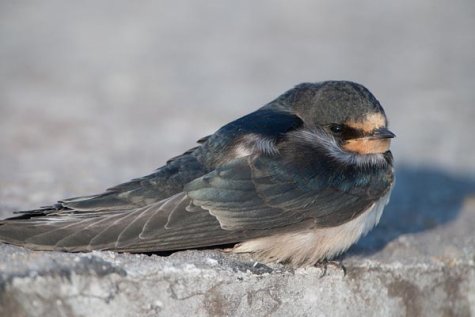Birder’s diary - 18.09
Birder Margus Ots, Linnuvaatleja.ee
Photo: Arne Ader
Translation: Liis
Barn swallow.
And once more at Mehikoorma to watch. Today a great milling started at once in early morning and during the day 530 000 migrants were counted, which is also the best number that has ever been counted at Mehikoorma. In four days at least 1,75 million migrant birds have come across the Lämmijärve. The large majority of this mass are still chaffinches (Fringilla coelebs). All Mehikoorma observations can be seen in the e-Biodiversity data base as before.
Today some excitement was caused by birdwatchers busy on the opposite shore at Cape Pnevo, I had not noticed them there earlier. There is actually a bird station at Cape Pnevo where teachers and students of the Pskov (Pihkva ) State Pedagogical University go to observe the migration and to ring birds. I would dearly have liked to know precisely who were migrating over their heads? Identifying the species of „dots“ flying at a distance of 2 km from the Mehikoorma beach doesn’t work. In addition not all birds can be noticed at all at such a distance. Today may have been a million day there. Russian ornithologists have always invited Estonian colleagues to visit Pnevo. This year unfortunately I did not find the time, but sometime in the future I would certainly like to go there.
At noon a message came by Rariliin (Birdline) that a long-billed dowitcher (Limnodromus scolopaceus) had landed at Võiste beach in Pärnumaa. This species of the north-western coast of North American and north-eastern Asia has only been seen once in Estonia – on 02.10.2009 in Läänemaa at Põgari. Although I went to Põgari to twitch the bird myself, and have it as lifer I decided to go now too and explore things in place. Despite several hours of thorough searching I did not find the bird again. In the same area a peregrine falcon (Falco peregrinus) was in action too and chased the waders constantly along the beach and it may well be that because of this creature the long-billed dowitcher had fled to who knows where. Among other more interesting birds 2 red-throated pipits (Anthus cervinus) were busy at the Võiste shore meadow, in the morning there had been 5 of them. Now is the best time to see this minor rarity.









